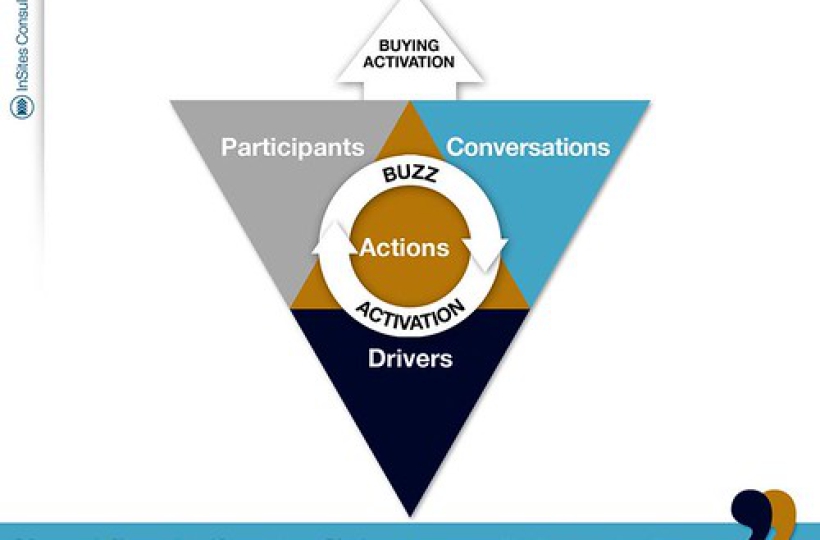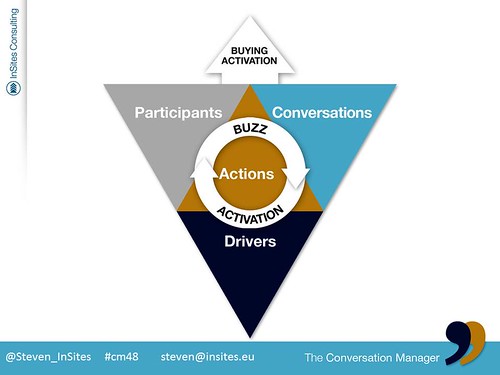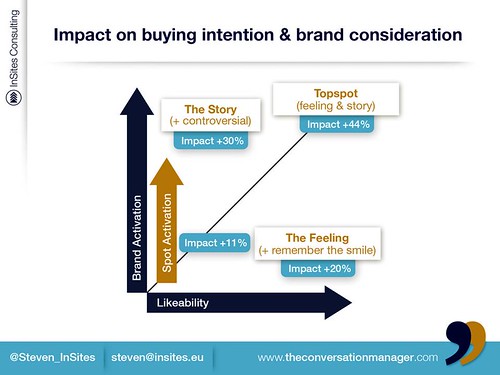Research: TV advertising and brand activation increase the purchase intention

In 2010, InSites Consulting tested almost all commercials that were broadcast on the Flemish commercial stations VTM & 2BE. In this survey, more than 1,300 spots were evaluated for viewer appreciation, conversation power of the spots and impact on the consumers’ purchase intention. These days, when TV advertising is again in the eye of the storm, this research shows that a good spot with enough conversation power can entail an impact that is 4 times as wide-ranging as the average spot. These are our conclusions from this extensive advertising survey. This study is a partnership between InSites Consulting, Pub & VmmTV.
A spot’s appreciation is determined by emotion
15% of the spots are attributed an appreciation score of 9 or 10 out of 10 by the consumers. 43% score 7 or 8 and unfortunately 42% score a six or less. This does not come as a surprise, but yet again we have to conclude that the consumer does not think every spot is equally good. During this survey, we looked for elements that could possibly explain a high appreciation. It appears that spots with a high appreciation all obtained a high score for the more emotional aspects of the spot. Things such as: gave me a warm feeling, the spot’s originality, the nice sensation … are all important drivers of a high appreciation. One of the aspects for which the spots obtain a somewhat lower score, although it is a real important driver of likeability, is the warm feeling. Consumers like to see spots that give them a good feeling, whereas others are sometimes nice, but do not have a positive approach.
Activation is determined by the story
Next to the appreciation, the conversational strength of a spot is also important. In my book ‘The Conversation Manager’, I use a new definition of advertising, i.e.: advertising has to be the start of a good conversation. This survey confirms that statement. When the spot’s message is sufficiently strong, people will talk about it. This concerns content rather than the emotional aspect. It is important to know that being controversial is a nice asset, but certainly no necessity to be conversation-worthy. Things that increase the conversation value of a spot are, amongst others: relevance to the consumer, does the spot depict a familiar situation, is its content useful. The survey shows that about 1 out of in 5 consumers was activated by a TV campaign.
Spot activation? Not as strong as brand activation
Another conclusion is the difference between brand and spot activation. When someone has viewed the spot, two different types of conversations can originate: consumers can talk about the advert, or they can talk about the brand that is advertised. This research shows that the impact of brand activation is 3 to 4 times higher as for spot activation. Talking about a campaign is nice, but the actual impact results from conversations on brands. I think this is one of the main conclusions of this survey. The target for advertisers is therefore not to stimulate conversations on spots, but conversations on the brand in the spot.
Strategic activation works, controversy is not a necessity at all
In other words: it’s all about strategic activation. Where the RIGHT people talk about the brand as CONVERSATION topic for the RIGHT reasons. If those three conditions are fulfilled, we can expect a very strong impact on that brand’s marketing indicators. The big trap of activation is the controversy. We sometimes think that a spot has to be controversial in order to create conversations; but this is not always the case. It may help if the spot’s story is good and recognisable. Controversial spots without a clear story entail less activation in the first place, and they also lead to less impact from spot activation and rarely to brand activation. Finally, this research teaches us that conversations on advertising in general range from positive to very positive. Less than 10% of all conversations are negative. Advertisers should therefore not fear that much being talked about negatively.
The top spot: combines appreciation and brand activation
The ultimate goal of each campaign is to create impact, preferably on the sales results of the brand in question of course. An important result of this advertising research points out that spots which obtain a high evaluation score and who have no brand activation have a positive effect on purchase intention. However, if next to obtaining a high evaluation score, a spot also succeeds to entail a high degree of brand activation, the purchase intention increases with 44%! The spot activation’s impact is very limited (11%) and actually barely offers any added value vs. the general appreciation.
Plenty of results, but here are my 4 key conclusions
We are talking about an extensive survey with a number of new insights; these are the main key conclusions:
- There is more than appreciation. It starts off with a good evaluation, but this is not the main cause for an impact on sales.
- People love to talk about brands and advertising: 20% of all spots are a conversation starter.
- Advertising should be the start of a conversation … about the BRAND (and not about the spot).
- A top spot (combining a high evaluation score and high brand activation) ensures a high impact on purchase intention, reaching a level of up to 44% increase in sales than a campaign without brand activation.
In this presentation you can read further details concerning the results of this major advertising study:
[slideshare id=7531246&doc=topspotstvday4x3-110406021539-phpapp02]

